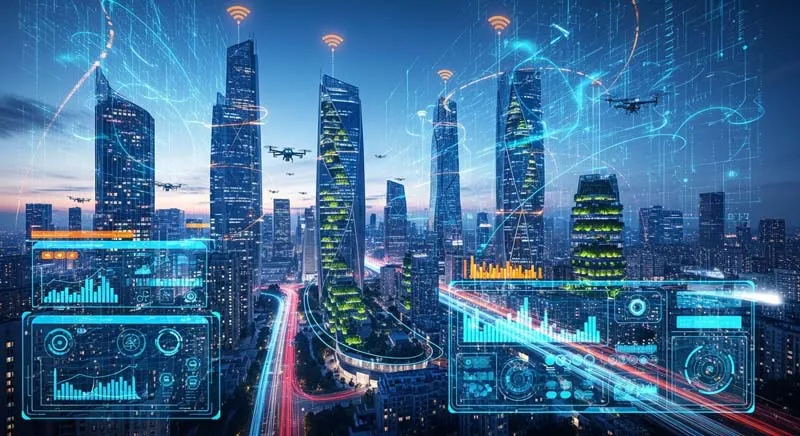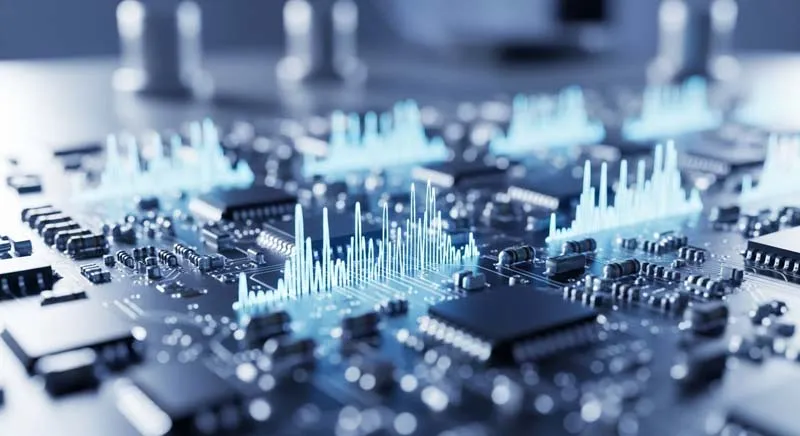Driven by the wave of global digitalization, IoT and AIoT are moving from the edge to the core of the intelligent economy. The Internet of Things connects the physical and digital worlds, while AIoT—the combination of Artificial Intelligence and IoT—adds the power of thinking to connected devices. Together, they are transforming industries, healthcare, transportation, cities, and even homes with unprecedented intelligence and automation.

I. From “Connected Things” to “Intelligent Things”: Redefining the Ecosystem
According to a recent forecast by Analog Devices, IoT platforms will flood the market within a year. This signals a shift from infrastructure construction to ecosystem integration. The proliferation of platforms is not a bubble but a sign of maturity. Standardization, openness, and scalability have become the new focal points of competition.
As a result, the era of connection-based rivalry is ending, while a new race centered on data value and intelligent decision-making is emerging. With AIoT, devices are no longer passive data collectors—they have evolved into intelligent agents capable of real-time learning and reasoning. Consequently, intelligent algorithms, model optimization, and edge deployment are now the defining elements of a strong IoT ecosystem.
II. High-Precision Sensors and Analog Signal Chains: The Foundation of Perception
The essence of IoT and AIoT lies in perception, which begins with accurate signal capture and transformation. High-precision sensors are rapidly advancing, from micrometer-level temperature probes to nanoscale gas detectors. They form the sensory network of every AIoT system.

Meanwhile, breakthroughs in analog signal chain technology enhance data fidelity and sensitivity, allowing AI models to interpret signals more precisely. Over the next two to five years, high-precision sensors and analog front-end circuits will drive most of the AIoT industry’s growth. They act as the tactile sense of smart manufacturing, the stethoscope of digital healthcare, and the eyes of intelligent transportation and energy management.
III. 5G RedCap: The Catalyst for Connectivity Expansion
In terms of communication, 5G RedCap (Reduced Capability) technology plays a crucial role in accelerating IoT and AIoT integration. RedCap offers lower power consumption, reduced cost, and wider coverage, making 5G accessible to mid- and low-speed IoT devices for the first time.

This commercialization marks a key milestone—IoT devices can now connect more efficiently to both cloud and edge systems. By 2030, 5G RedCap modules are expected to occupy a significant share of the cellular IoT market, providing the essential network foundation for large-scale AIoT deployment.
IV. AI at the Edge: A Shift from Cloud Intelligence to Edge Intelligence
At the IEEE AIoT 2025 Conference, experts emphasized that future breakthroughs will occur at the edge, not the cloud. Edge AI enables devices to process recognition, decision-making, and feedback locally, minimizing latency and reducing data transmission costs. Furthermore, it enhances privacy protection and operational reliability.
The rise of lightweight AI algorithms, neural network pruning, and low-power AI chips is reshaping the technological landscape. As a result, a new hybrid model—“cloud-connected, edge-intelligent”—is becoming the mainstream architecture of AIoT systems.
V. Expanding Applications: A Multi-Dimensional Intelligent Revolution
The fusion of IoT and AIoT goes far beyond technical innovation—it is rebuilding industrial ecosystems.
- In smart manufacturing, AIoT enables predictive maintenance, reducing downtime and cost.
- In digital healthcare, wearable devices and cloud-based diagnostics work together to monitor patient health remotely.
- In smart cities, AI algorithms optimize traffic flow and manage energy distribution more efficiently.
- In cold chain logistics, IoT monitors temperature and humidity in real time, ensuring safety and traceability throughout the supply chain.
Essentially, this revolution transforms data transmission from a one-way process into a continuous, self-learning cycle of perception and decision-making.
VI. The Road Ahead: From Connected Intelligence to Cognitive Intelligence
Over the next five years, IoT and AIoT will continue to merge, evolving toward cognitive intelligence—a state where systems can understand context and make autonomous decisions. The focus of industrial competition will shift from connecting more devices to understanding more of the world.
Moreover, open standards, green innovation, and cross-domain collaboration will be the key themes of the next phase of AIoT evolution. Ultimately, IoT and AIoT represent not only a technological convergence but also the foundation of a new intelligent civilization that reshapes how humans interact with their environment.

VII. EELINK Communication: Empowering the Intelligent Future
Amid this global transformation, EELINK Communication remains committed to technological innovation and reliable connectivity. The company is a high-tech enterprise dedicated to applying wireless communication technologies to IoT. With over 20 years of experience in hardware and software R&D, EELINK develops comprehensive IoT solutions covering temperature and humidity monitoring, asset tracking, vehicle security, insurance telematics, and cold-chain logistics.
Through continuous innovation, EELINK strives to enable seamless interconnection across industries. Its mission is to deliver efficient and dependable solutions that create real value for customers while driving forward the future of intelligent connectivity.
The integration of IoT and AIoT is illuminating a new era of intelligence. With its deep expertise and spirit of innovation, EELINK Communication continues to power the connections that make the intelligent world possible.
